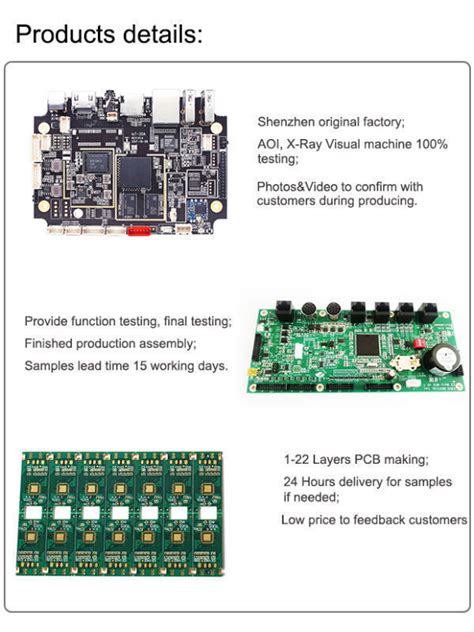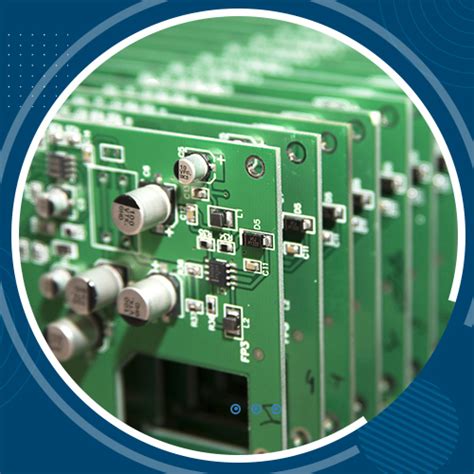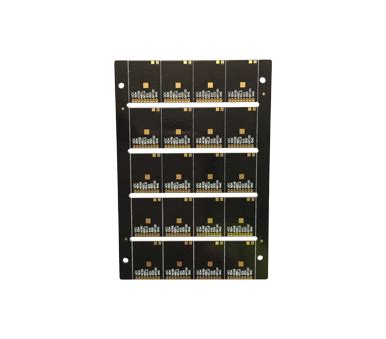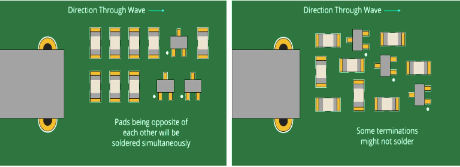PCB Assembly Supplier Selection: Key Factors to Consider

Key Takeaways
Selecting the right PCB assembly supplier is a critical decision that directly impacts product quality, timelines, and overall project success. Key considerations include verifying adherence to international quality standards (e.g., ISO 9001, IPC-A-610), which ensure consistency in PCBA processes. Balancing cost-effectiveness with budget constraints requires evaluating not just upfront pricing but long-term value, such as reduced rework costs from reliable suppliers.
Technical expertise in component sourcing, especially for specialized or high-mix projects, is vital. Suppliers with robust networks can mitigate shortages and delays, while production flexibility allows adaptation to design changes or volume shifts. Certifications like UL or RoHS compliance further validate a supplier’s capability to meet regulatory and environmental requirements.
| Factor | Key Considerations | Impact |
|---|---|---|
| Quality Standards | ISO certifications, IPC Class 2/3 | Reduces defects and warranty claims |
| Lead Times | Turnaround consistency, rush-order options | Ensures on-time delivery |
| Scalability | Capacity for volume surges or prototyping | Supports business growth |
Supply chain resilience is another priority—suppliers with transparent risk management strategies minimize disruptions. Effective customer support and communication channels (e.g., real-time tracking) foster collaboration, while innovation potential ensures alignment with emerging technologies. By prioritizing these factors, businesses can secure a PCB assembly partner that drives efficiency and reliability in electronic manufacturing.

Understanding the Importance of PCB Assembly Supplier Selection
Selecting the right PCB assembly supplier is a critical decision that directly impacts the success of electronic product development and manufacturing. PCBA (Printed Circuit Board Assembly) services form the backbone of modern electronics, influencing product performance, reliability, and time-to-market. A well-chosen supplier ensures seamless integration of design and manufacturing, minimizing risks such as component shortages, production delays, or quality inconsistencies.
The importance of this decision lies in the supplier’s ability to meet quality standards while aligning with project timelines and budgets. For instance, suppliers with ISO certifications or compliance with IPC-A-610 standards demonstrate adherence to industry best practices, reducing the likelihood of defects. Additionally, their expertise in component sourcing mitigates risks associated with obsolete or counterfeit parts, which can derail production and inflate costs.
Beyond technical capabilities, a reliable PCB assembly supplier acts as a strategic partner. Their production flexibility allows scaling operations to accommodate fluctuating demand, whether for prototyping or high-volume runs. Equally vital is their capacity to manage lead times effectively, ensuring timely delivery without compromising quality. This becomes especially crucial in industries like automotive or medical devices, where regulatory compliance and precision are non-negotiable.
Finally, the supplier’s communication efficiency and transparency in sharing progress updates foster trust and collaboration. A partner who proactively addresses challenges—such as supply chain disruptions or design flaws—adds significant value, safeguarding your project’s timeline and reputation. By prioritizing these factors, businesses can secure a PCBA partner that not only meets current needs but also supports future innovation and growth.
Evaluating Quality Standards and Certifications
When selecting a PCB assembly supplier, verifying adherence to rigorous quality standards and certifications is critical to ensuring product reliability and compliance. Reputable suppliers should hold globally recognized certifications such as ISO 9001 (quality management), IPC-A-610 (acceptability of electronic assemblies), and IATF 16949 (automotive quality systems). These certifications demonstrate a commitment to standardized processes, defect prevention, and continuous improvement. For PCBA projects in regulated industries—like medical devices or aerospace—suppliers must also comply with industry-specific standards such as ISO 13485 or AS9100.
Beyond certifications, assess the supplier’s quality control processes. Advanced techniques like automated optical inspection (AOI), X-ray testing, and in-circuit testing (ICT) help identify defects early, reducing rework costs and delays. A transparent supplier will provide detailed documentation, including test reports and traceability records, to validate product consistency.
Tip: Request a quality audit report or visit the supplier’s facility to observe their processes firsthand. This ensures their claims align with operational realities.
Additionally, consider the supplier’s approach to corrective and preventive actions (CAPA). A robust CAPA system indicates proactive problem-solving, minimizing risks of recurring issues. For instance, if a PCB assembly defect arises, the supplier should analyze root causes, implement fixes, and update workflows to prevent future occurrences.
Lastly, evaluate their supply chain partnerships. Suppliers sourcing components from certified manufacturers reduce the risk of counterfeit parts, which can compromise product safety. By prioritizing quality standards and certifications, businesses mitigate risks, enhance product longevity, and build trust with end-users.

Balancing Cost-Effectiveness and Budget Constraints
When selecting a PCB assembly supplier, balancing cost-effectiveness with budget limitations is critical. While upfront pricing often drives decisions, focusing solely on the lowest bid can compromise quality or lead to hidden expenses. A reliable PCBA partner should offer transparent pricing models that align with your project’s complexity and volume. For instance, high-volume orders may benefit from economies of scale, while low-volume prototyping might require flexible pricing structures. Evaluate suppliers that leverage advanced manufacturing technologies to reduce waste and optimize material usage, as these practices often translate to competitive pricing without sacrificing performance.
Certifications like ISO 9001 or IPC-A-610 can signal a supplier’s commitment to quality control, which directly impacts long-term costs by minimizing rework or defects. Additionally, assess whether the supplier provides value-added services such as component sourcing or design-for-manufacturability (DFM) feedback. These offerings can streamline production timelines and reduce overhead costs associated with delays or redesigns.
Budget constraints also necessitate scrutiny of lead times and payment terms. Suppliers with shorter turnaround times may charge a premium, but faster production can offset opportunity costs in time-sensitive projects. Conversely, negotiate extended payment schedules or tiered pricing for long-term partnerships to align expenses with cash flow needs.
Finally, consider the total cost of ownership (TCO), which includes logistics, testing, and post-production support. A supplier with robust supply chain management reduces risks of component shortages or price fluctuations, ensuring predictable budgeting. By prioritizing suppliers that balance technical expertise with cost transparency, businesses can achieve both financial efficiency and reliable PCB assembly outcomes.

Assessing Technical Expertise and Component Sourcing Capabilities
When selecting a PCB assembly supplier, evaluating their technical expertise and component sourcing capabilities is critical to ensuring project success. A supplier’s ability to handle complex designs, advanced technologies like surface-mount technology (SMT), and mixed-technology boards directly impacts the quality and functionality of the final PCBA. Look for suppliers with proven experience in your industry, as familiarity with specific standards—such as automotive, medical, or aerospace requirements—can streamline compliance and reduce errors.
Equally important is the supplier’s capacity to source high-quality components reliably. Global supply chain disruptions have made timely procurement a challenge, so partners with robust supplier networks, alternative sourcing strategies, and inventory management systems are invaluable. Verify whether they maintain long-term relationships with certified distributors or leverage independent channels to mitigate shortages. Certifications like ISO 9001 or IPC-A-610 further validate their commitment to quality in both assembly and component selection.
Additionally, assess their design-for-manufacturability (DFM) support. Skilled PCB assembly providers offer pre-production feedback to optimize layouts, reduce costs, and prevent delays. This collaborative approach ensures that designs align with manufacturing capabilities, minimizing rework. Finally, inquire about their flexibility in handling low-volume prototypes versus high-volume runs, as scalability is essential for adapting to evolving project needs. A supplier’s technical agility and sourcing resilience ultimately determine their ability to deliver consistent, reliable PCBA solutions.
Analyzing Lead Times and Production Flexibility
When selecting a PCB assembly supplier, lead times and production flexibility are critical factors that directly impact project timelines and adaptability. Lead times—the duration from order placement to delivery—vary significantly across suppliers and depend on factors like component availability, manufacturing capacity, and logistics efficiency. A reliable PCBA partner should offer transparent timelines while maintaining the agility to accommodate urgent orders or unexpected design changes. For instance, suppliers with in-house component sourcing capabilities or vendor-managed inventory systems often reduce delays caused by supply chain bottlenecks.
Production flexibility ensures the supplier can scale operations to meet fluctuating demand, whether for low-volume prototyping or high-volume runs. This includes the ability to handle mixed-technology boards (e.g., combining SMT and through-hole components) or adapt to last-minute revisions without compromising quality. Evaluating a supplier’s PCB assembly processes—such as automated vs. manual workflows—can reveal their capacity to balance speed and precision. Additionally, certifications like ISO 9001 or IPC-A-610 compliance indicate adherence to standardized practices that support consistent turnaround times.
Just-in-time manufacturing and rapid prototyping services are hallmarks of a flexible PCBA supplier, enabling clients to test designs iteratively and accelerate time-to-market. However, overly aggressive lead time promises may signal potential quality risks. To mitigate this, assess historical performance data and client testimonials to verify reliability. Finally, consider how the supplier manages supply chain disruptions—such as component shortages—through contingency planning or alternative sourcing strategies. A partner that excels in both lead time optimization and production adaptability becomes a strategic asset in dynamic electronics markets.
Ensuring Supply Chain Reliability and Risk Management
Selecting a PCB assembly supplier with a robust supply chain is critical to mitigating disruptions and ensuring consistent production timelines. A reliable partner will demonstrate proactive strategies to address risks such as material shortages, geopolitical uncertainties, or logistical bottlenecks. Start by evaluating their component sourcing capabilities—suppliers with diversified vendor networks and long-term agreements with certified manufacturers are better positioned to secure critical parts, even during market fluctuations. For PCBA projects, this becomes particularly vital, as delays in procuring specialized components can derail entire production schedules.
Risk management protocols should include contingency plans for scenarios like natural disasters, labor strikes, or sudden demand spikes. Suppliers with ISO-certified processes or adherence to IATF 16949 standards often integrate rigorous risk assessment frameworks, ensuring traceability and accountability across their operations. Additionally, assess their inventory management systems: the ability to maintain safety stock for high-demand components or offer alternative sourcing options can significantly reduce downtime.
Transparency is another key factor. A dependable PCB assembly partner will provide real-time visibility into their supply chain through digital platforms, enabling clients to monitor progress and anticipate potential delays. Regular audits and third-party certifications further validate their commitment to supply chain resilience. For businesses operating in regulated industries, such as automotive or medical devices, verifying compliance with REACH or RoHS directives ensures materials meet global safety and environmental standards.
Finally, consider scalability. A supplier’s capacity to adapt to evolving project scopes—whether ramping up production or integrating new technologies—directly impacts long-term reliability. By prioritizing risk mitigation strategies and supply chain agility, companies can secure partnerships that not only meet current demands but also withstand future challenges in the dynamic electronics manufacturing landscape.
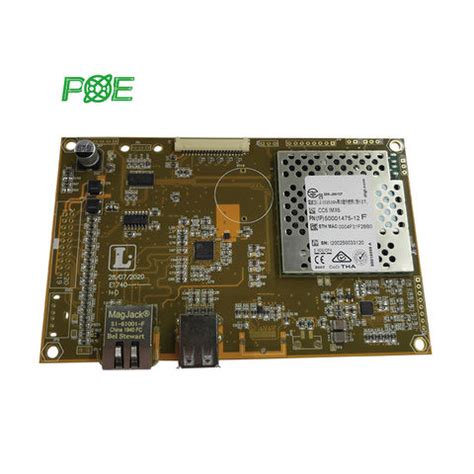
Reviewing Customer Support and Communication Efficiency
Effective customer support and streamlined communication are critical when partnering with a PCB assembly supplier. A supplier’s ability to respond promptly to inquiries, address technical concerns, and provide real-time updates can significantly influence project timelines and outcomes. Start by assessing their communication channels—whether they offer dedicated account managers, multilingual support, or 24/7 availability—to ensure alignment with your operational needs. For instance, a PCBA provider with transparent escalation protocols and documented response times reduces the risk of miscommunication during critical phases like prototyping or volume production.
Equally important is evaluating their problem-solving agility. Suppliers that proactively identify potential bottlenecks in PCB assembly workflows—such as component shortages or design flaws—demonstrate a commitment to collaboration. Look for evidence of structured feedback loops, such as regular progress reports or post-project reviews, which foster continuous improvement. Certifications like ISO 9001 or ISO 13485 often reflect standardized communication practices, but direct experience through pilot projects can offer deeper insights into their responsiveness.
Additionally, consider their technical support infrastructure. A PCBA partner with in-house engineering teams can provide faster resolutions to design-for-manufacturability (DFM) challenges compared to those reliant on third-party experts. Tools like collaborative ERP portals or IoT-enabled tracking systems further enhance transparency, allowing clients to monitor production milestones and inventory levels in real time.
Finally, prioritize suppliers that balance automation with a human touch. While chatbots and automated ticketing systems improve efficiency, complex PCB assembly projects often require nuanced discussions. A supplier’s willingness to engage in detailed technical dialogues—whether about solder paste specifications or thermal management strategies—can be a decisive factor in ensuring long-term partnership success. By prioritizing both communication efficiency and adaptive support structures, businesses can mitigate risks and maintain seamless production cycles.
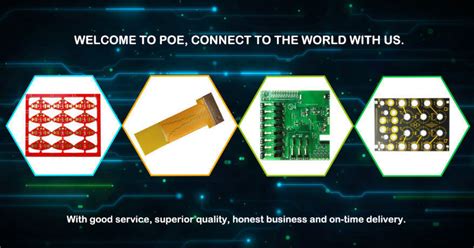
Future-Proofing with Scalability and Innovation Potential
When selecting a PCB assembly supplier, prioritizing scalability and innovation ensures long-term compatibility with evolving project demands. A reliable PCBA partner should demonstrate the ability to scale production volumes seamlessly, accommodating both rapid growth and fluctuations in demand without compromising quality. This requires evaluating their infrastructure—such as automated assembly lines, advanced testing equipment, and modular workflows—to confirm adaptability to future technological advancements. Suppliers with a proven track record in adopting emerging technologies, such as high-density interconnect (HDI) boards or flexible circuitry, signal readiness to support next-generation designs.
Equally critical is assessing their innovation potential, which hinges on R&D investments, collaborative problem-solving approaches, and agility in prototyping. A forward-thinking PCB assembly provider will proactively suggest design optimizations, material substitutions, or process improvements to enhance performance or reduce costs. Certifications like ISO 13485 (for medical devices) or IATF 16949 (for automotive) further validate their commitment to industry-specific innovation and compliance. Additionally, transparent communication about their roadmap for integrating trends like IoT-enabled manufacturing or AI-driven quality control can differentiate partners capable of future-proofing your supply chain.
Finally, consider their supply chain resilience and ability to source advanced components amid global shortages. A supplier with diversified vendor networks and real-time inventory tracking minimizes disruption risks, ensuring your projects remain scalable even during market volatility. By aligning with a PCBA partner that balances technical foresight with operational flexibility, businesses can secure a competitive edge in rapidly shifting industries.
Conclusion
Selecting the right PCB assembly supplier is a critical decision that directly impacts the success of electronic product development and manufacturing. To ensure optimal outcomes, businesses must prioritize technical expertise, quality certifications (such as ISO 9001 or IPC-A-610), and cost-effectiveness without compromising reliability. A supplier’s ability to manage component sourcing challenges, including shortages or obsolescence, is equally vital for seamless PCBA production. Evaluating lead times and production flexibility helps align supplier capabilities with project timelines, especially for prototypes or high-volume orders. Additionally, assessing supply chain resilience mitigates risks related to geopolitical factors, logistics delays, or unexpected demand shifts. Transparent communication and responsive customer support further streamline collaboration, ensuring alignment on design changes or quality audits. Finally, partnering with a PCB assembly provider that demonstrates scalability and invests in innovation—such as advanced automation or sustainable practices—ensures long-term adaptability in a rapidly evolving industry. By methodically weighing these factors, businesses can secure a PCBA partner that delivers consistent quality, operational efficiency, and value-driven solutions.
FAQs
What certifications should a reliable pcb assembly supplier have?
A reliable pcb assembly supplier should hold certifications such as ISO 9001 (quality management), IPC-A-610 (acceptability of electronic assemblies), and UL listing for safety compliance. These ensure adherence to industry standards and consistent product quality.
How do I balance cost-effectiveness with quality in pcba services?
Evaluate suppliers offering transparent pricing models, volume discounts, and value-added services like design-for-manufacturability (DFM) feedback. Prioritize pcb assembly partners that maintain quality while optimizing material and labor costs.
What factors influence lead times for pcb assembly projects?
Lead times depend on component availability, production capacity, and testing requirements. Suppliers with pcba expertise often streamline workflows, offer expedited options, and maintain relationships with component distributors to mitigate delays.
How critical is component sourcing in pcb assembly?
Component sourcing impacts cost, timelines, and reliability. Ensure your pcb assembly supplier has access to certified vendors, manages obsolescence risks, and provides alternatives for hard-to-find parts to avoid production bottlenecks.
What steps ensure supply chain reliability for pcba projects?
Choose suppliers with diversified sourcing networks, inventory management systems, and contingency plans for disruptions. Regular audits and real-time tracking tools further enhance pcb assembly supply chain resilience.
How does communication efficiency affect pcb assembly outcomes?
Clear communication ensures alignment on specifications, timelines, and changes. Opt for suppliers with dedicated project managers, responsive support teams, and collaborative platforms to streamline pcba workflows.
Ready to Partner with a Trusted PCB Assembly Supplier?
For tailored pcb assembly solutions that prioritize quality, speed, and innovation, click here to explore our services. Let’s bring your electronic designs to life!

